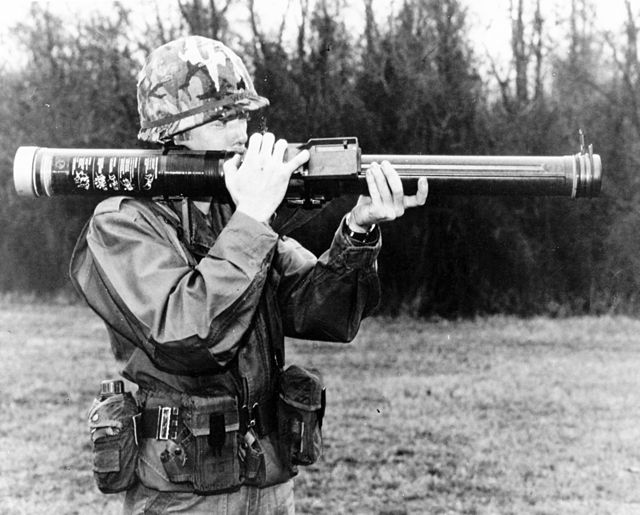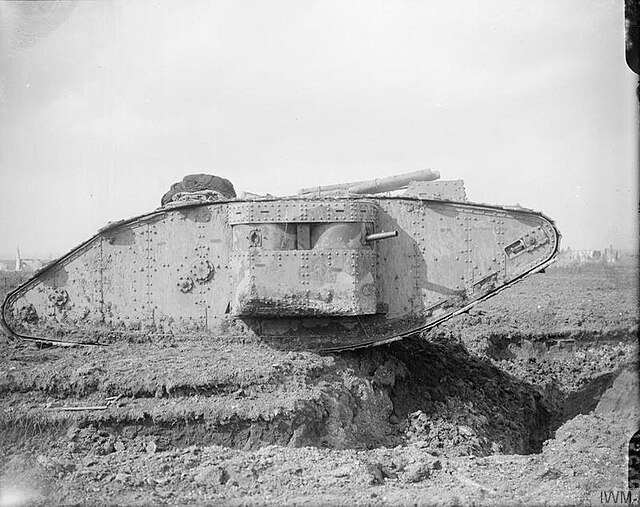Anti-tank warfare originated during World War I from the desire to develop technology and tactics to destroy tanks. After the Allies deployed the first tanks in 1916, the German Empire introduced the first anti-tank weapons. The first developed anti-tank weapon was a scaled-up bolt-action rifle, the Mauser 1918 T-Gewehr, that fired a 13.2 mm cartridge with a solid bullet that could penetrate the thin armor used by tanks at that time and destroy the engine or ricochet inside, killing occupants. Because tanks represent an enemy's strong force projection on land, military strategists have incorporated anti-tank warfare into the doctrine of nearly every combat service since. The most predominant anti-tank weapons at the start of World War II in 1939 included the tank-mounted gun, anti-tank guns and anti-tank grenades used by the infantry, and ground-attack aircraft.
A soldier preparing to fire the FGR-17 Viper, an American experimental one-man disposable antitank rocket
British Indian Army tank-hunting squad with anti-tank rifle and molotov cocktails in North Africa, 6 October 1940
A British 17-pounder anti-tank gun towed behind half-track in Italy, 1 September 1944
A British heavy tank of World War One
Military tactics encompasses the art of organizing and employing fighting forces on or near the battlefield. They involve the application of four battlefield functions which are closely related – kinetic or firepower, mobility, protection or security, and shock action. Tactics are a separate function from command and control and logistics. In contemporary military science, tactics are the lowest of three levels of warfighting, the higher levels being the strategic and operational levels. Throughout history, there has been a shifting balance between the four tactical functions, generally based on the application of military technology, which has led to one or more of the tactical functions being dominant for a period of time, usually accompanied by the dominance of an associated fighting arm deployed on the battlefield, such as infantry, artillery, cavalry or tanks.
German World War I observation post disguised as a tree.





